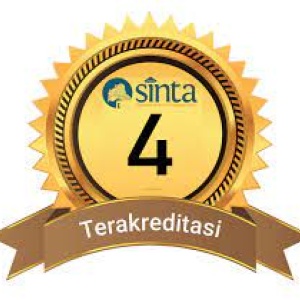Konsep Raja Ideal pada Masa Sriwijaya Berdasarkan Bukti-Bukti Tertulis
DOI:
https://doi.org/10.37014/jumantara.v11i2.1041Keywords:
Buddhism, Inscription, Ideal king, Srivijaya, VajrayanaAbstract
The king in the Hindu-Buddhist era had such a big role for his people. The ideal king is needed by the people so that the country becomes prosperous. The concept of an ideal king has been known for a long time in the archipelago, even since before Hindu-Buddhist culture developed. In Java and Bali the ideal king is described in the Astabrata Concept. The concept of an ideal king in Srivijaya has never been discussed by researchers, even though Srivijaya was one of the ruling kingdoms in Indonesia during the early Hindu-Buddhist era. This study discusses about concept of the ideal king that developed in Srivijaya based on written data in the form of inscriptions scattered in several conquered Srivijaya areas. The concept of the ideal king of Srivijaya needs to be known to reconstruct how much acceptance of Hindu-Buddhist culture in Indonesia, especially during the Srivijaya era. In answering these problems, research was conducted with archeological methods, which consisted of data collection, analysis and interpretation. Based on this research, it can be seen that the concept of the ideal king of Srivijaya was much influenced by Buddhism, especially the Vajrayana school. The king in Srivijaya depicted as an excellent person, born as a man, diplomat and wealthy.References
Alnoza, Muhamad, dkk. 2020. "Ekologi Politik dalam Perluasan Wilayah kadatuan Sriwijaya Berdasarkan Prasasti." Berkala Arkeologi Sangkhakala, Vol. 23 (1), 58-72.
Boechari. 2012. Aneka Catatan Epigrafi dan Sejarah Kuno Indonesia, Dalam Melacak Sejarah Kuno Indonesia lewat Prasasti, oleh Boechari, 401-407. Jakarta: Kepustakaan Populer Gramedia.
______. 2012b. An Old Malay Inscription of Sriwijaya. Dalam Melacak Sejarah Kuno Indonesia lewat Prasasti, oleh Boechari, 361-385. Jakarta: Kepustakaan Populer Gramedia.
______. 2012c. Astabrata. Dalam Melacak Sejarah Kuno Indonesia lewat Prasasti, oleh Boechari, 531-541. Jakarta: Kepustakaan Populer Gramedia.
_____. 2012d. Epigraphic Evidence on Kingship in Ancient Java. Dalam Melacak Sejarah Kuno Indonesia lewat Prasasti, oleh Boechari, 217-225. Jakarta: Kepustakaan Populer Gramedia.
_____.2012e. New Investigation on The Kedukan Bukit Inscription. Dalam Melacak Sejarah Kuno Indonesia lewat Prasasti, oleh Boechari, 385-401. Jakarta: Kepustakaan Populer Gramedia.
Budiarta, Eri, et al. 2008. Dewa-Dewi Masa Klasik. Klaten: Badan Pelestarian Peninggalan Purbakala Jawa Tengah.
Coedes, George. 2014. Kerajaan Srivijaya. Dalam Kedatuan Sriwijaya, oleh George Coedes, Louis-Charles Damais, Hermann Kulke dan Pierre-Yves Manguin, 1-40. Jakarta: Komunitas Bambu.
_________. 2014b. Prasasti berbahasa Melayu Kerajaan Srivijaya. Dalam Kedatuan Sriwijaya, oleh George Coedes, Louis-Charles Damais, Hermann Kulke dan Pierre-Yves Manguin, 45-88. Jakarta: Komunitas Bambu.
Coehen, Richard. 2006. Beyond Enlightenment: Budhhism, Religion, Modenity. London: Routledge
De Casparis, Johannes Gijsbertus. 1985. "Sedikit tentang Golongan-golongan di dalam Masyarakat Jawa Kuno." Amerta, No. 2: 54-59.
Deetz, James. Invitation to Archaeology. New York: The Natural History Press.
Espin, Orlando, James .B. Nikoloff .2007. An Introductory Dictionary of Theology and Religious Studies. Minnesota: Liturgical Press.
Gokhale, Balkrishna Govind. 1966. "Early Buddhist Kingship."The Journal of Asian Studies, Vol. 26, 15-22.
Halkias, Georgios T. 2013. The Enlightened Sovereign: Buddhism and Kingship in India dan Tibet. Dalam A Companion to Buddhist Philospohy, oleh Emmanuel, Steven.M, 491-511. Oxford: John Willey and Sons Publishers.
Kartakusuma, Richadiana. 1993. "Dapunta Hiyam Srijayasa: Kajian atas Makna dari Prasasti Telaga Batu." Amerta 13, 17-32.
Kempers, August Johan Bernet. 1959. Ancient Indonesia Art. Boston: Harvard University Press.
Kulke, Hermann. 1978. Devaraja Cult. New York: Department of Asian Studies Cornell University.
____________. 2014. Kadatuan Srivijaya- Imperium atau Kraton Srivijaya: Tinjauan kembali Bukti Epigrafis.Dalam Kedatuan Sriwijaya, oleh George Coedes, Louis-Charles Damais, Hermann Kulke dan Pierre-Yves Manguin. Jakarta: Komunitas Bambu.
Liebert, Gosta .1976. Iconography Dictionary of the Indian Religions. Leiden: E.J. Brill.
Maulana, Ratnaesih. 1997. Ikonografi Hindu. Depok: Fakultas Sastra UI.
Munandar. Agus Aris. 2014. Awal Perkembangan Kebudayaan di Asia Tenggara. Dalam Mitra Satata: Kajian Asia Tenggara Kuna, oleh Agus Aris Munandar, 1-23. Jakarta: Wedatama Widyasastra.
__________________. 2014b. Perkembangan Kebudayaan Indonesia Klasik. Dalam Mitra Satata: Kajian Asia Tenggara Kuna, oleh Agus Aris Munandar, 171-221. Jakarta: Wedatama Widyasastra.
__________________. 2017. Tradisi Pemerintahan dan Konsep Raja Ideal menurut Pandangan Masyarakat Sunda Kuna abad ke-13-16 M. Dalam Siliwangi, Sejarah dan Kebudayaan Sunda Kuna, oleh Agus Aris Munandar, 103-247. Jakarta: Wedatama Widyasastra.
Poesponegoro, Marwati Djoened dan Nugroho Notosusanto. 2010. Sejarah Nasional Indonesia: Zaman Kuna. Jakarta: Balai Pustaka.
Robinson, Richard, et al. 1997. The Buddhist Religion: A Historical Introduction. London: Wadsworth Publishing Company.
Sedyawati, Edi, et al. 2013. Candi Indonesia: Seri Jawa. Jakarta: Direktorat Cagar Budaya dan Permuseuman.
Tambiah, Stanley Jeyaraja. 1978. "The Buddhist Conception of Kingship and Its Historical Manifestations: A Reply to Spiro." The Journal of Asian Studies, No. 4, 801-809.
Williams, Paul et al. .2000. Buddhist Thought: A Complete Introduction to the Indian Tradition. New York: Routledge.
Downloads
Published
Issue
Section
License
Copyright (c) 2020 Jumantara: Jurnal Manuskrip Nusantara

This work is licensed under a Creative Commons Attribution-ShareAlike 4.0 International License.
- This statement is the author's commitment to respect copyright, both in terms of citing other people's work and utilizing journal content. If necessary, the author can send an Authenticity Statement of Article stating that "this work is the author's original idea and has never been sent to another publisher and published in any publication"
- The author retains copyright.
- The moral rights of publication belong to the author.
- Formal legal aspects in the use of journal publications refer to the Creative Commons Attribution-ShareAlike 4.0 (CC BY-SA) license, which means that journal content can be used freely for any purpose.









